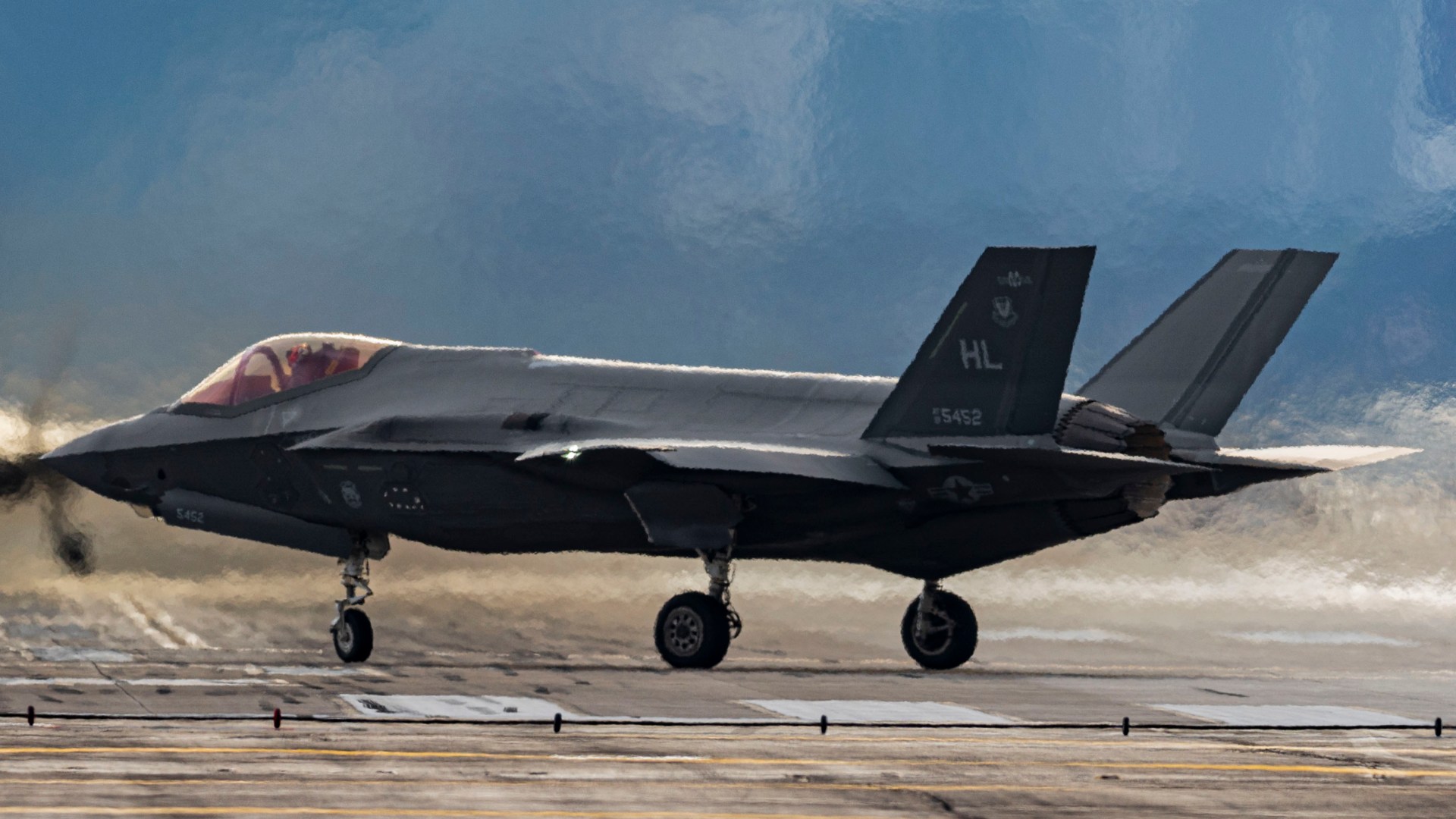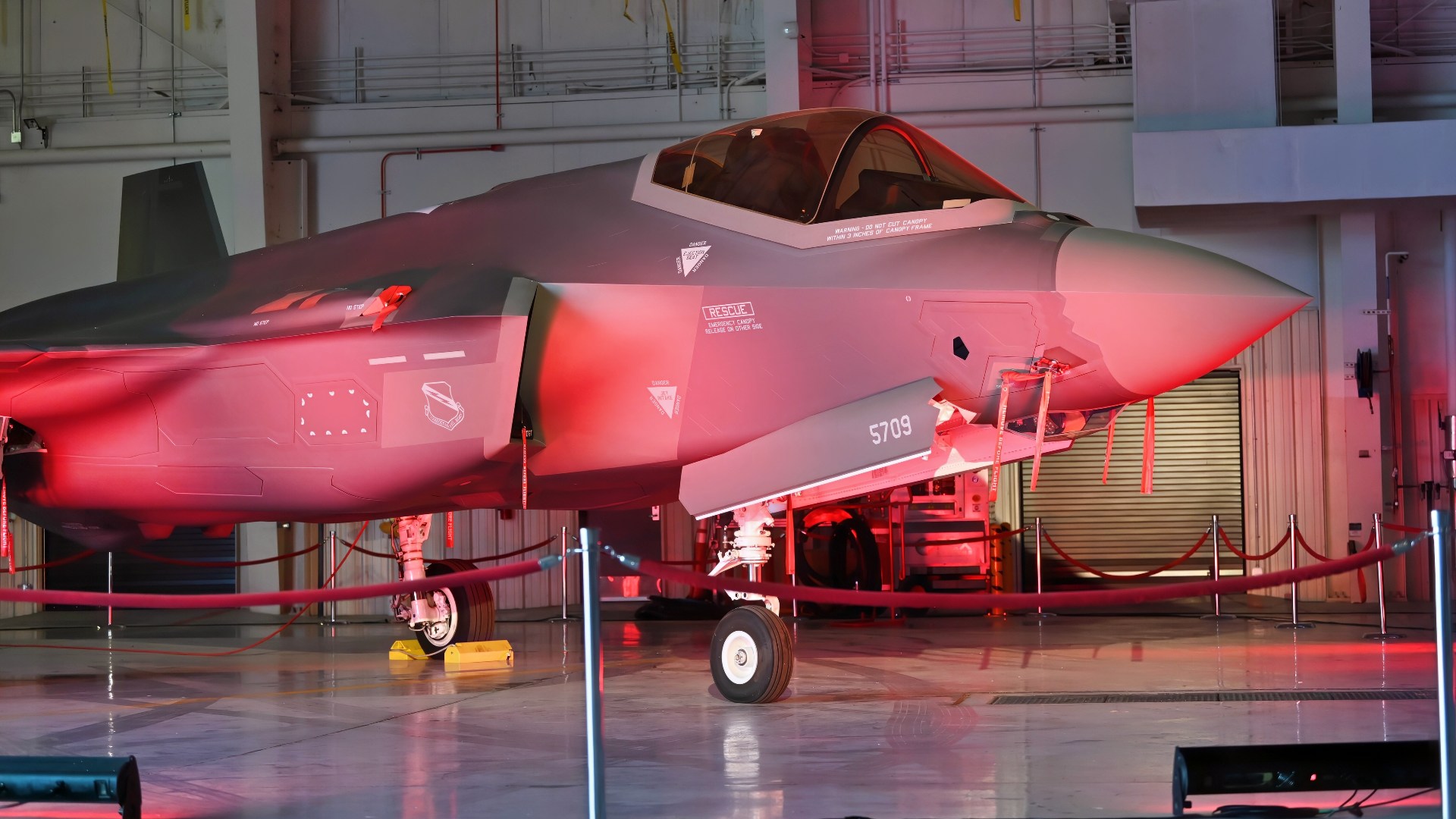Key Points and Summary – Operation Midnight Hammer was not just a showcase for the B-2 bomber; it was a proving ground for the F-35.
-Flying “hundreds of miles into Iran,” F-35s escorted B-2s, hunted surface-to-air missile sites, and likely used their advanced EW suites and sensors to blind or destroy Russian-built S-300 and S-400 systems.

A U.S. Air Force F-35 Lightning II assigned to the 421st Fighter Squadron, Hill Air Force Base (AFB), Utah, prepares to launch out for a Red Flag-Nellis 24-1 mission while another takes off at Nellis AFB, Jan. 23, 2024. This Red Flag will have approximately 30 units and close to 2,000 participants from U.S. and Allied forces. (U.S. Air Force photo by Senior Airman Zachary Rufus)
-Acting as forward scouts, they fused radar, electronic warfare, and ISR data, then pushed it over secure links to keep the bomber corridor clean.
-For the U.S. Air Force, the mission was a rare, live-fire validation that the F-35 can quietly dismantle a modern integrated air-defense network.
Inside Midnight Hammer: F-35 vs. Russian-Built Air Defenses Over Iran
The Pentagon made it clear months ago that the B-2 bombers used in the attack on Iran were supported by 4th and 5th-generation aircraft, so it comes as little surprise that news reports are now specifying that indeed F-35s played a central role in escorting the stealth bombers.
An interesting essay in Business Insider quotes a US Air Force commander explaining that the F-35s flew “hundreds of miles into Iran” and were the last to leave. The Air Force officer further states that the F-35s used missiles against surface-to-air missile sites.
“We flew hundreds of miles into Iran, escorting the B-2s the entire way,” Lt. Col. Aaron Osborne, commander of the 34th Fighter Squadron, shared in a US Air Force story, as quoted by Business Insider. “We employed weapons to great effect against multiple surface-to-air missile sites.”
F-35 vs. Iranian Air Defenses
While not surprising, these Air Force comments seem to indicate that, alongside the broader discussion of the B-2’s successful performance, the F-35 was also highly effective at eluding and destroying Iranian air defenses.
The comment that the F-35s went deep into Iran and were the last to leave also seems to indicate that the F-35s may have used their sensors to support forward Intelligence, Surveillance, and Reconnaissance (ISR) functions, given the ranges at which they can detect targets and process sensor data.
In an initial sense, the forward scouting, sensing, and protection role of the F-35 suggests that the aircraft’s stealth properties were very effective against ground-based radar in a way they had not been tested before.

Capt. Kristin “BEO” Wolfe, F-35A Lightning II Demonstration Team pilot and commander, flies during an airshow demonstration practice Mar. 5, 2020, at Hill Air Force Base, Utah. The team will make its first of 20 appearances at the Yuma Air Show, Mar. 13-14, 2020, at Marine Corps Air Station, Yuma, Ariz. (U.S. Air Force photo by Cynthia Griggs)
While details are not likely available for security reasons, the F-35 may have used its advanced EW suite to jam or disable Iranian air defenses, used precise stand-off air-to-ground missiles to destroy them, or even networked in real time with forward-operating drones that could relay threat specifics.
The F-35 is specifically engineered with bolts and seams designed to elude radar detection, featuring a smooth, rounded exterior fortified with radar-absorbent composite materials.
The F-35’s performance was extremely significant because it may have been one of the first times US F-35s destroyed Russian-built air defenses.
Iran is well known to have Russian-built S-300 and S-400 air defense systems, which have, without question, been targeted by Israeli F-35s, yet US Air Force F-35s may not have operated in this capacity before.
F-35s were used in Afghanistan against the Taliban, and British F-35s were reportedly used against ISIS in Iraq. Yet the US F-35s may have had only limited, if any, actual combat experience against live, armed advanced air defenses.
The results of the Operation Midnight Hammer mission indicate that the F-35 indeed functioned as intended as a stealth, multi-role attack platform with highly advanced, high-resolution, long-range sensors, supported by advanced computing.
F-35 Networking
The stealth fighters also likely played a critical role as a forward-sensing node, detecting threats and clearing or safeguarding the airspace for higher-altitude B-2s to operate.
Defense Secretary Pete Hegseth said he was not aware of any shots fired at the B-2, a comment that speaks well of the B-2’s stealth properties and also indicates that the F-35 may indeed have proven essential in efforts to protect the B-2s.

ANDERSEN AIR FORCE BASE, GUAM — F-16 Fighting Falcons, F-18 Hornets and a B-2 Spirit, line the Andersen flight line during Exercise Valiant Shield, 22 June, 2006. Valiant Shield 2006, the U.S. Pacific Command exercise, which runs June 19 to 23, will be conducted in the vicinity of Guam. Valiant Shield focuses on integrated joint training and interoperability among U.S. military forces while responding to a range of mission scenarios.
(U.S. Air Force Photo/Staff Sgt Bennie J. Davis III)
It is also entirely conceivable that the stealth fighter was able to network information to the B-2 through secure datalinks to assist with targeting precision.
Pentagon leaders were clear that the B-2s were extremely precise and effective in striking their intended targets, so it would not be at all surprising if F-35s used stealth and advanced sensing to identify further and verify targets for the B-2s.
About the Author: Kris Osborn
Kris Osborn is the President of Warrior Maven – Center for Military Modernization. Osborn previously served at the Pentagon as a highly qualified expert in the Office of the Assistant Secretary of the Army—Acquisition, Logistics & Technology. Osborn has also worked as an anchor and on-air military specialist at national TV networks. He has appeared as a guest military expert on Fox News, MSNBC, The Military Channel, and The History Channel. He also has a Masters Degree in Comparative Literature from Columbia University.
More Military
Montana-Class vs. Yamato-Class: It Would Have Been the Ultimate Battleship Battle
The Littoral Combat Ship Might Be the Navy’s Biggest Mistake Ever










